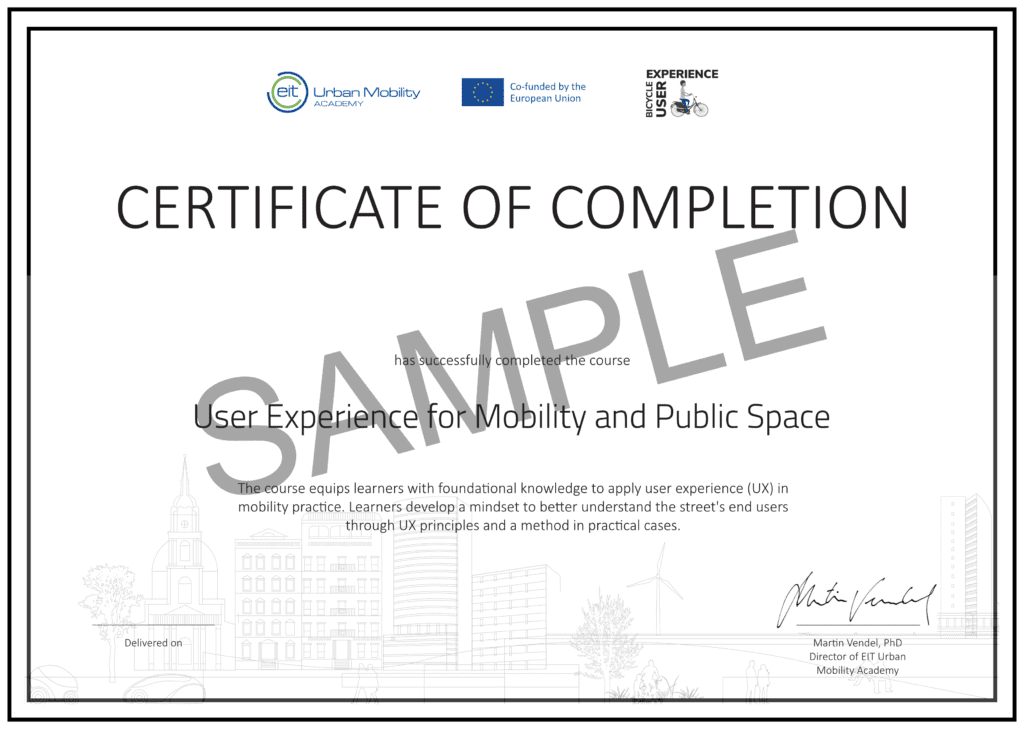Already enrolled? LOGIN HERE
This course equips urban mobility professionals with foundational knowledge to apply user experience (UX) in practice. You will learn about the relevance of a people-centered perspective in urban mobility, develop a mindset to better understand your end users– thinking across different mobility modes- and reflect on the impact of your own work on these users.
Modules
Recommended schedule
Total length
Instructors

Trey Hahn
Trey helps professionals and organizations think about the end users and how to incorporate people's experiences into the planning and design process. He works on this for cycling with Bicycle User Experience (BUX) and the Urban Cycling Institute. Deeper thinking about people's characteristics and needs is the starting point for usable, high-quality mobility infrastructure.
Who is this course for?
- Urban mobility professionals from a variety of roles (e.g. engineers, planners, designers, project managers, and decision makers) ready to relate their work to the end user’s experience.
- Private, public, and nonprofit professionals alike (not limited to one sector).
- Students interested in learning about the application of user experience in mobility planning.
What will you learn?
- Understand the historical context of traffic engineering in the street and deduce why the user experience approach is relevant for mobility planning.
- Develop a basic understanding of UX/usability principles and a common user-centered method.
- Apply the principles in the context of the street and public space across different mobility modes.
- Compare the application of principles in a people-oriented and car-oriented street environment.
- Reflect on the principles in your own context.
Trailer
Recommended prerequisites
An interest in user experience and people-centered thinking in mobility. Helpful to have: a case in mind or your own work context to apply user experience principles.
Free & paid options
You are free to access and participate in the course for free. If you want to earn a certificate upon completion, you can purchase a certificate. The certificate will be accessible only once the course is successfully completed. Read more here.

What Urban Professionals Have to Say


Course Content
Ratings and Reviews

The course uses UX design frameworks to provide useful user-centric view&method on (bicycle) infra. The original context of UX design lies in software and this shows in this course because applicability isn't always strong. I would welcome if the course was more bold in asserting a translation to urban design context and to use some general usercriteria from the field (e.g. Gehl, Jacobs, CROW)
Very insightful course on UX in our cities, it really helps to see public space from a people-centric perspective. To be honest, since taking this course I can't help but analyze everything I see and do on the street.
Hi Priscila, wonderful! Congrats on taking the big step of seeing public space from the perspective of people in it!



Hi Tomas, thank you for your feedback. I would be happy to hear more of your thoughts.